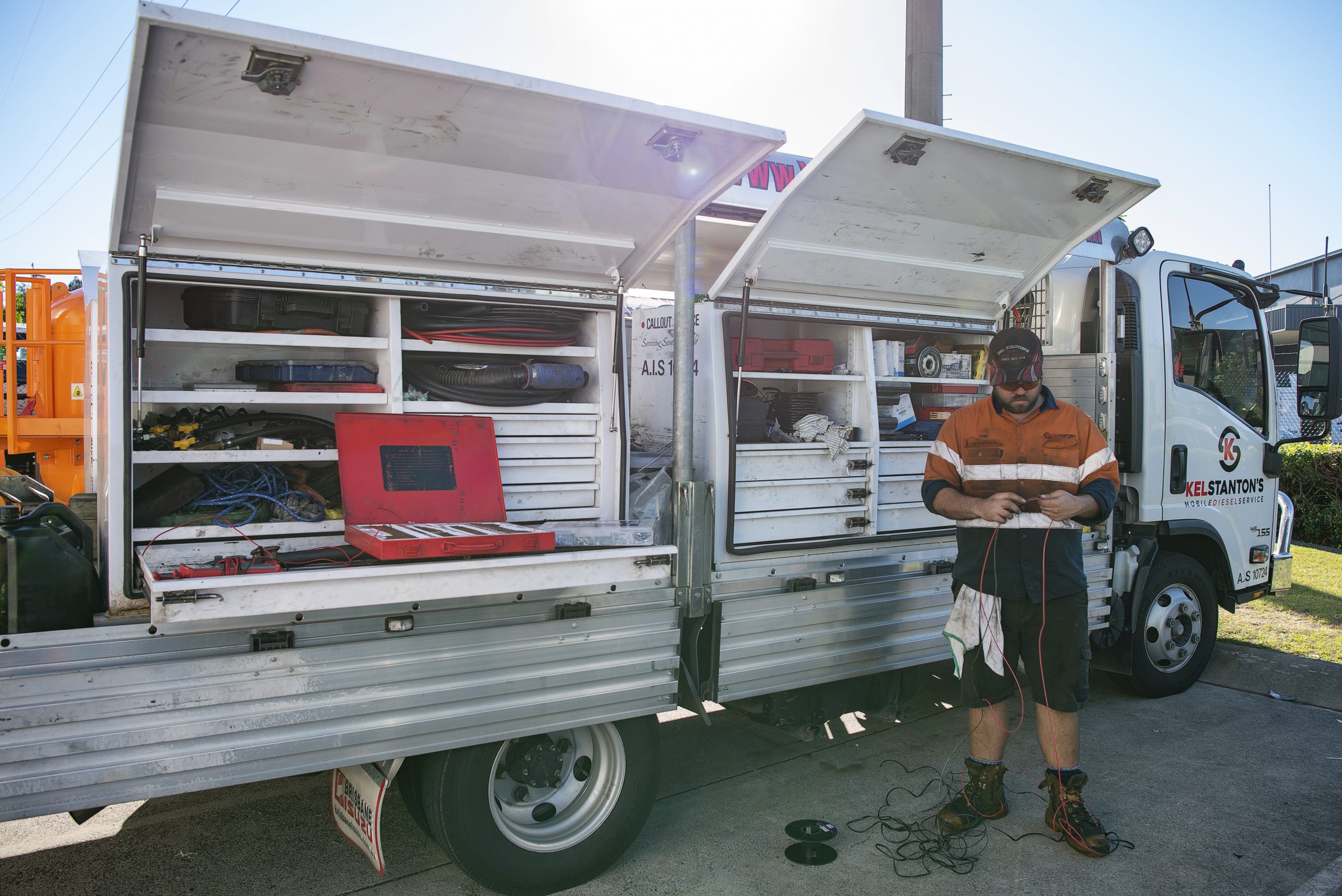The diesel particulate filter (DPF) is one of the most important parts in modern diesel vehicles, but it needs proper maintenance to perform at its best. A clogged diesel particulate filter might raise your fuel consumption by up to 10%, and repairs can get pricey.
KS Diesel's expert team stands ready to assist with your DPF maintenance needs, and we’ll take you through some cleaning methods and let you know when to leave it to the professionals.
Understanding Your DPF filter
What is a diesel particulate filter?
A diesel particulate filter works as an exhaust aftertreatment device that removes diesel particulate matter (soot) from the exhaust of diesel engines. The DPF acts like a soot trap and catches harmful particles that would otherwise end up in the atmosphere.
Today’s DPFs are incredibly effective, removing 85% or more of soot particles under normal conditions, with some achieving filtration rates close to 100%.
How does a DPF work in your vehicle?
Your DPF uses an advanced filtration process. Exhaust gases flow through the filter, which traps soot particles and lets gases pass through.
The DPF has limited capacity, so it needs to clear accumulated soot regularly through regeneration. This process burns off trapped particulates at high temperatures and turns solid soot into gases that safely exit through the exhaust system.
Why DPF cleaning matters for performance and emissions
Your vehicle needs regular DPF cleaning to run at its best. A clogged DPF raises backpressure in the engine, which can reduce engine power, cause slow acceleration, and increase fuel consumption.
Regeneration burns off soot but can’t remove ash residue that builds up inside the filter over time. This residue needs industrial cleaning to prevent performance issues and serious blockages.

Signs Your DPF Needs Cleaning
You can save yourself from expensive repairs and roadside breakdowns by spotting the early warning signs of a clogged DPF. Your vehicle sends clear signals when the diesel particulate filter needs attention.
Reduced engine performance
A clogged DPF creates backpressure in your exhaust system, making your engine work harder to push out gases. That makes your vehicle feel underpowered, especially when you’re climbing hills or overtaking. In severe cases, your vehicle might enter limp mode, a protective measure that cuts performance to prevent engine damage.
Increased fuel consumption
Your DPF might be the reason you’re stopping at petrol stations more often. A blocked filter makes your engine burn extra fuel to maintain normal performance. The engine adjusts fuel delivery to make up for reduced exhaust flow. Some drivers also push the accelerator harder when they feel less power, which creates more unburned fuel and makes things worse.
Warning light on dashboard
The DPF warning light on your dashboard is the clearest sign. Modern vehicles are equipped with sensors that monitor the DPF performance. If they detect a problem, they’ll activate the warning light, acting as an early warning system to prevent damage, whatever make of vehicle you drive. You should act right away when this light appears.
Unusual smoke or exhaust smell
Strong smells, burning odours, and excessive smoke can all indicate that exhaust gases aren’t getting filtered properly.
How to Clean Your DPF
A clean DPF helps your vehicle perform better and last longer. Let’s look at several methods that work best based on your filter’s condition and specific needs.
Passive regeneration while driving
Your DPF cleans itself through passive regeneration during highway drives when exhaust temperatures hit between 250 and 500°C. The best results come from maintaining steady highway speeds, since any stops can prevent your filter from reaching the right cleaning temperature.
Active regeneration
Your vehicle’s ECU kicks in with active regeneration when the DPF hits about 45-70% capacity. The process injects extra fuel into the exhaust stroke and raises temperatures to burn off the excess soot. If you’re not driving long distances to trigger passive regeneration, your engine might struggle to clean the DPF without active regeneration.
Forced regeneration with diagnostic tools
Sometimes if automatic processes don’t work, a forced regeneration can help. Forced regeneration uses special diagnostic tools to clean blocked DPFs, which is helpful for vehicles that don’t reach the steady driving speeds necessary to activate passive regeneration.
Manual cleaning methods at home
If you want to clean the particulate filter yourself, you have some options. DPF additives can be mixed into fuel to help burn off soot, and DIY kits are available to clean it with chemicals or compressed air systems.
DIY methods aren’t foolproof, meaning deep-seated deposits can remain in the filter. Wrong cleaning methods can destroy your filter, leaving replacement as your only option.
When to Call a Professional
While home cleaning methods work for minor blockages, some situations need expert attention. Even skilled DIY enthusiasts should know when it’s time to call a professional.
Severe clogging or repeated warning lights
You need professional help when your DPF warning light changes from orange to red or if multiple warning lights show up at once. Your vehicle could suffer substantial damage if you keep driving with these warning signs.
DPF filter not responding to regeneration
Failed regeneration attempts or persistent warning lights mean you should get professional help right away. Your regeneration cycles might fail because your trips are too short or you drive too slowly. The filter might be reaching saturation faster if your vehicle starts regeneration cycles more often than usual.

Benefits of professional DPF cleaning services
Professional DPF cleaning gives you:
- Filters restored to 95% of original condition through deep cleaning
- Safe cleaning that protects filter structure
- Detailed test reports with documentation
- Extra security through service guarantees
Leave Your DPF to the Experts at KS Diesel
A clean DPF filter is crucial for every diesel vehicle, and nobody knows them better than KS Diesel. Our team uses specialised equipment to restore your filter, saving you money on expensive replacements. Whether you see warning lights flashing or just want to prevent future problems, give us a call to see how we can help.

